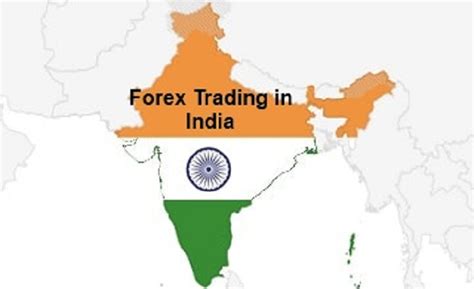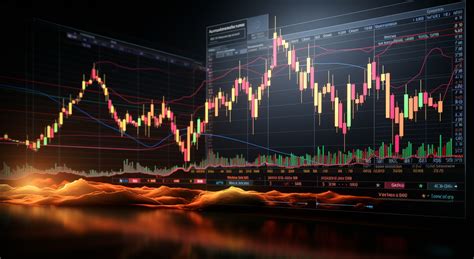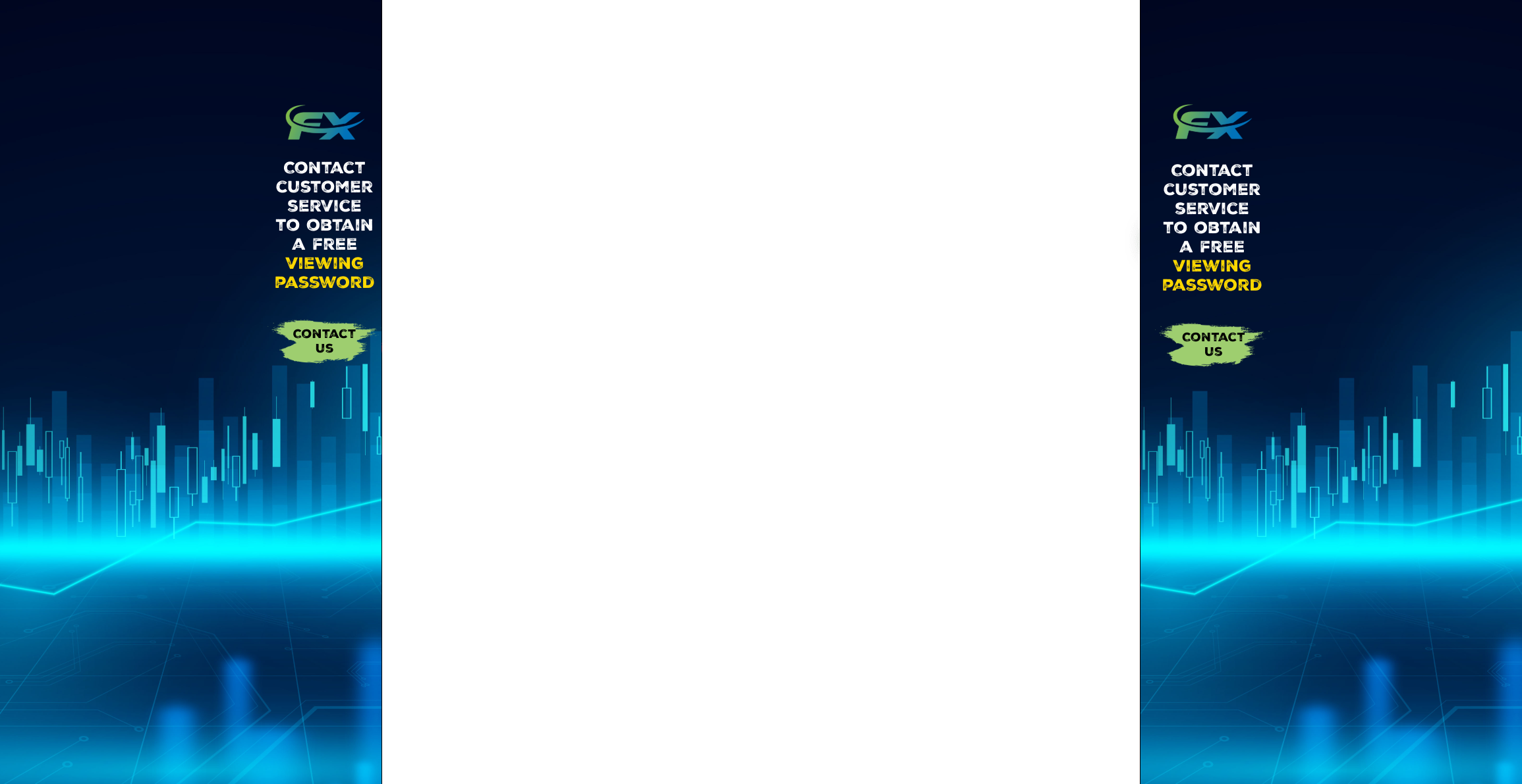Global interest in foreign exchange trading has grown rapidly, and India is no exception. Forex in India represents a unique intersection of regulatory oversight, evolving technology, and expanding investor interest. As more individuals seek exposure to international currency markets, understanding how to trade legally and effectively becomes essential. Navigating this space involves familiarity with legal frameworks, trading platforms, market behavior, and risk control methods tailored to the Indian context. Whether you're aiming to hedge currency exposure, diversify investments, or explore new financial opportunities, mastering the dynamics of forex in India can open doors to a broader economic landscape.
Legal and Regulatory Landscape for Forex in India

A firm grasp of the legal structure around forex in India is essential before engaging in any form of currency trading or international transaction.
Understanding FEMA and RBI Guidelines
Foreign Exchange Management Act (FEMA) is the backbone of all forex-related activity in India. Introduced to regulate external payments and promote orderly development, it outlines clear rules for Currency Exchange, Forex Trading, and Remittances. The Reserve Bank of India acts as the implementing authority, ensuring that all International Payments and Currency Conversions involving the Indian Rupee (INR) are monitored under Exchange Control Regulations. RBI Guidelines stipulate that only transactions involving INR paired with USD, EUR, GBP, or JPY on recognized exchanges are permitted for individuals, and even those come with limitations.
FEMA prohibits residents in India from trading in currency pairs that do not involve INR, and only authorized brokers under strict RBI monitoring can offer such services. It is essential to distinguish between platforms legally registered with RBI and those that merely claim compliance.
Who Can Trade Forex in India Legally
Resident Indians are allowed to participate in forex markets through authorized Indian brokers, but only in pairs involving INR, such as INR/USD or INR/JPY.
Non-resident Indians (NRIs) have more flexibility, but still must operate within the framework laid down by RBI and FEMA.
Institutions and Corporates may access a wider set of instruments like Forward Contracts or Currency Futures for hedging purposes, provided they follow Import and Export Regulations.
Retail traders cannot legally use international platforms that offer currency pairs not involving INR unless they are trading from outside India with funds not remitted from India.
Violating these eligibility conditions can result in financial penalties, disqualification from trading, or more severe regulatory action.
Role of Authorized Dealers and Banking Institutions
Authorized Dealers (ADs) play a pivotal role in India's currency ecosystem. Licensed by the Reserve Bank of India, these entities include:
| Type of Institution | Functionality Offered | Supervised By | Role in Forex in India |
|---|---|---|---|
| Commercial Banks | Facilitate Currency Exchange, International Payments | RBI | Allow individuals and corporates to access forex tools |
| Authorized Money Changers | Offer currency conversion services for travel or remittance | RBI | Operate under Exchange Control Regulations |
| Full-Fledged Money Changers | Provide currency sale and purchase in retail markets | RBI Guidelines | Limited to permitted transaction types |
| Category I Authorized Dealers | Offer a wide range of forex services including trade and hedging | RBI + FEMA | Primary channel for legal forex transactions |
These institutions act as the gatekeepers of legality. They ensure compliance with KYC Norms, verify source of funds, and guide users through regulatory compliance for Currency Sale, Purchase, or Wire Transfer.
KYC Norms and Compliance Requirements
Proof of Identity and Address: PAN card, Aadhaar, Passport are standard requirements to initiate Currency Exchange or open a forex account with Authorized Dealers or Commercial Banks.
Source of Funds Verification: Individuals must disclose the origin of funds used for Currency Conversion, especially when dealing with high volumes or cross-border transfers.
Purpose Declaration: Whether the transaction is for travel, remittance, or Currency Trading, the intent must be explicitly stated and documented.
Transaction Limits: Under the Liberalized Remittance Scheme (LRS), individuals are allowed to remit up to USD 250,000 annually for permissible transactions, including forex activities.
Compliance is not optional; it forms the framework that connects RBI Guidelines with everyday forex activity.
Legal Risks and Penalties for Unauthorized Trading
Violations related to unregulated forex trading platforms or unauthorized Currency Exchange attract significant penalties under FEMA.
Individuals using offshore platforms for Currency Trading in pairs like USD/EUR or USD/JPY without involving INR are in breach of Exchange Control Regulations.
Legal consequences include monetary fines, seizure of funds, and in some cases, initiation of criminal proceedings depending on the scale and intent.
RBI routinely issues public warnings highlighting unapproved platforms and urges users to engage only with Financial Institutions holding valid authorization.
With the growing demand for Forex Trading in India, the importance of remaining within the legal framework becomes even more critical. Regulatory Compliance protects both the trader and the national financial ecosystem from systemic risks associated with global Market Fluctuations and Exchange Rate Volatility.
Getting Started with Forex Trading in India
The first action after learning about forex in India is selecting the right entry point—this cluster is where ideas turn into execution.

Choosing the Right Trading Platform
Not every trading platform available online is approved for forex in India. Retail investors must stay within the regulatory perimeter defined by the Reserve Bank of India and only use brokers registered under Indian jurisdiction. Consider the following factors when choosing a platform:
Regulatory Compliance
Ensure the platform is backed by a broker registered with the Reserve Bank of India and compliant with FEMA. This guarantees legality for trading INR pairs like INR/USD or INR/JPY.Currency Pair Availability
Confirm that the platform offers Currency Futures and Spot Rates involving INR. Trading in pairs like USD/EUR is not permitted for Indian residents using Indian funds.Interface and Usability
Look for a clean, responsive interface that supports real-time Market Fluctuations, Exchange Rate Volatility charts, and live Economic Indicators.Transaction Costs and Spreads
Transparent pricing, low Currency Conversion fees, and narrow spreads make a platform competitive. Avoid hidden costs in Currency Purchase and Currency Sale actions.Support and Integration
Cross-platform access, customer support availability, and integration with Indian Banking Institutions for funding and withdrawals are essential.
| Platform Feature | Importance for Indian Users | Regulated by RBI | Supports INR Pairs |
|---|---|---|---|
| INR/USD Trading | Mandatory for legal forex transactions | Yes | Yes |
| FEMA Compliance | Prevents legal penalties | Yes | Yes |
| Real-Time Data Feed | Helps manage Exchange Rate Volatility | No | Yes |
| INR Funding Options | Direct bank linking with Commercial Banks | Yes | Yes |
| Currency Futures Access | Expands strategic possibilities | Yes | Yes |
Setting Up a Forex Trading Account with an Indian Broker
The actual process of opening a forex account begins once a registered broker is chosen. It unfolds in a methodical way and is deeply tied to KYC Norms and Exchange Control Regulations.
<step 1> Choose an RBI-registered broker that offers forex trading services. Ensure they allow trading in Currency Pairs involving INR only.
<step 2> Complete the KYC documentation, which involves submitting proof of identity, address, PAN card, and recent bank statements as per RBI Guidelines.
<step 3> Link your bank account with the platform. Use a bank that qualifies as a Commercial Bank authorized for outward remittances and Currency Exchange.
<step 4> Fund the account using INR. Ensure transactions remain within the USD 250,000 annual limit defined under the Liberalized Remittance Scheme.
<step 5> Begin trading with Spot Rates or Currency Futures involving INR. The most common pairs include INR/USD, INR/EUR, and INR/JPY.
Each of these steps ensures that Forex Trading activity is compliant, trackable, and efficient for residents in India.
Basic Currency Pairs and Their Relevance to INR
The choice of currency pairs in Indian forex markets is narrow but significant. Not all international Currency Types are available to Indian retail traders. The focus lies on pairs that include the Indian Rupee.
For example, INR/USD is the most heavily traded pair, influenced by Global Market Trends and Economic Indicators such as inflation and interest rates in both India and the United States. INR/JPY and INR/EUR are increasingly relevant, reflecting rising trade volumes with Japan and the Eurozone. INR/GBP plays a key role in remittances and international educational payments due to strong ties with the UK.
Each pair reflects a different aspect of India’s position in global trade and finance:
INR/USD: Dominates due to high USD reserve transactions and international trade settlements.
INR/EUR: Driven by India’s import relationships with the Eurozone and Market Sentiment around the Euro.
INR/JPY: Affects Japanese investments in Indian infrastructure and export regulation-sensitive industries.
INR/GBP: Common in Remittances and Currency Exchange related to UK-bound educational and medical travel.
Understanding the behavior of these pairs allows Indian traders to make informed decisions under Market Fluctuations, manage risk more effectively, and align trades with national Economic Indicators.
Forex Instruments and Market Tools
Tools available for forex in India offer traders ways to respond to Market Fluctuations, manage Exchange Rate Volatility, and gain exposure to global currencies within regulated channels.
Forward Contracts vs. Spot Transactions
Spot transactions involve immediate Currency Exchange at prevailing Spot Rates, typically settled within two business days. Forward Contracts, on the other hand, allow individuals and institutions to lock in a rate for a future date—commonly used by importers, exporters, and corporates hedging against anticipated currency shifts.
For example, an exporter in Mumbai expecting payment in USD after three months may use a Forward Contract to fix the INR/USD rate, guarding against unfavorable shifts due to Economic Indicators or global Market Sentiment. In contrast, a traveler converting INR to EUR for immediate use would execute a spot deal through Authorized Dealers or Money Changers.
The divergence lies in intent—Spot for instant execution, Forward for strategic timing. Both fall under Exchange Control Regulations and require approval through RBI-authorized channels.
Using Currency Futures for Hedging
Currency Futures are standardized contracts to buy or sell a Currency Pair at a future date and a predetermined rate.
In India, they are offered on platforms such as NSE and BSE under RBI Guidelines, restricted to INR pairs like INR/USD or INR/GBP.
Individuals use them to hedge risk arising from Market Volatility, especially when dealing with planned foreign payments or receipts.
Businesses engaged in international trade use these tools to protect against adverse shifts in the Indian Rupee's value due to Interest Rate changes or inflation concerns.
Each contract carries expiry dates and margin requirements, closely monitored by the exchange and regulated by FEMA.
Hedging through Currency Futures supports long-term planning, enabling strategic allocation of funds amidst Global Market Trends.

Currency Options for Volatility Management
Managing volatility becomes critical when Exchange Rate fluctuations become erratic. Currency Options offer the right, but not the obligation, to buy or sell a currency at a set rate before a specified date.
This flexibility appeals to both individual investors and institutional players in cities like Bangalore and Delhi, especially during periods of rising Inflation Rates or unpredictable Interest Rate announcements. Options contracts allow traders to take protective positions during uncertain periods while still benefiting from favorable movements.
For example, someone expecting to make a large International Payment in USD may purchase a call option on INR/USD. If the Rupee depreciates, the option gains value, offsetting the cost impact. If the rate stays favorable, the option is simply not exercised.
Options are advanced tools requiring familiarity with Derivatives and strategy layering, typically accessed through registered Financial Institutions.
Role of ETFs in Currency Exposure
| ETF Type | Currency Exposure Offered | INR Pair Compatibility | Accessibility for Indian Residents | Regulatory Supervision |
|---|---|---|---|---|
| Currency ETFs (Global) | USD, EUR, GBP, JPY | Indirect (non-INR pairs) | Not permitted via Indian brokers | Outside RBI jurisdiction |
| INR-based ETFs | India-focused exposure via INR-linked assets | Yes | Available on NSE/BSE | Under SEBI and RBI |
| Commodity-linked ETFs | May indirectly impact Currency Trading behavior | Yes | Accessible to Indian retail traders | SEBI & RBI-compliant |
Though Indian investors are restricted from accessing foreign Currency ETFs directly through local brokers due to FEMA, INR-based ETFs offer a way to understand currency-linked asset movement. For deeper forex exposure, domestic traders typically rely on Derivatives and Futures.
Introduction to Derivatives in Forex
Derivatives are instruments whose value derives from the movement of another asset—in this case, Currency Pairs. These tools, which include Futures, Options, and Forward Contracts, allow traders to manage exposure, speculate on trends, or hedge against risk.
In India, Derivatives involving the Indian Rupee must be traded on regulated exchanges and only include INR with USD, EUR, JPY, or GBP. This aligns with the Reserve Bank of India's position on limiting exposure to Market Volatility while still offering strategic value.
The growth of Derivatives in the Indian forex space has helped corporates navigate uncertainty and encouraged Retail Investors to enter the forex market within the permitted framework.
Real-Time Exchange Rate Monitoring Tools
<step 1> Install credible monitoring platforms like Investing.com or apps supported by NSE/BSE for live Spot Rates on INR/USD and INR/EUR.
<step 2> Use Commercial Bank portals to cross-check live rates offered for Currency Sale or Purchase, especially for Wire Transfers or Remittances.
<step 3> Track Global Economic Indicators such as inflation announcements, GDP data, and central bank meetings (RBI, US Fed, ECB) that move the Forex Market.
<step 4> Set alerts for target exchange rates when planning large Currency Conversion or Forex Trading activities.
<step 5> Use RBI bulletins and circulars to stay updated on changes in Exchange Control Regulations affecting Real-Time Rate Availability.
Access to accurate and timely information on rate movements is crucial when trading or transferring Indian Rupee in high-value transactions, especially during periods of Exchange Rate Volatility.
Understanding Market Dynamics
Currency performance responds to more than charts—it reacts to interest rates, sentiment shifts, inflation spikes, and global events. INR lives in this rhythm.
Global Market Trends Impacting INR
Global Market Trends move the Indian Rupee in ways that are both visible and subtle. Trade deficits, crude oil prices, geopolitical uncertainty, and movements in USD strength all ripple through the INR.
When the Federal Reserve hikes Interest Rates, capital flows often move away from emerging markets like India, putting pressure on the INR. Similarly, a sharp rise in oil prices increases India’s import bills, weakening the Rupee due to the higher demand for USD. The performance of stock indices like the S&P 500 or global announcements by the ECB or Bank of Japan can further stir currency behavior.
Over the last decade, INR has consistently reacted to tensions in the Middle East, Brexit outcomes affecting GBP, and US-China trade frictions. Currency movements, when viewed through this broader lens, become more predictable and contextual.
The Role of Economic Indicators and Interest Rates
GDP Growth Rate: Higher domestic growth often boosts investor confidence in INR-based assets.
Interest Rates: When RBI increases rates, the Indian Rupee may strengthen due to better returns for foreign investors.
Inflation Rate: Persistent inflation erodes purchasing power and weakens the currency.
Trade Balance: A consistent trade surplus supports INR, while large deficits tilt the balance toward USD.
Unemployment Rate: Lower unemployment indicates economic strength and can influence positive Market Sentiment.
Monitoring these Economic Indicators can help predict shifts in currency values and plan Currency Exchange or Forex Trading strategies more effectively.
How Inflation and Market Sentiment Affect Currency Movements
Currency valuation often begins with numbers, but it moves with emotions. Inflation and Market Sentiment are deeply entwined in this psychological game.
When inflation in India spikes, the real return on investments drops. This often pushes investors toward Dollar- or Euro-denominated assets, weakening the INR. On the flip side, expectations of inflation cooling may attract funds back to Indian markets, strengthening the Rupee.
But numbers alone don’t drive the market—perception does. Even if Economic Indicators seem stable, a single comment from a central bank or a news event from a major Indian city like Mumbai or Delhi can trigger volatility. This is where Market Sentiment takes the lead. Fear of recession, optimism about growth, anticipation of political stability—these feelings, circulating through headlines and social media, affect daily INR fluctuations.
Currency Exchange decisions are often shaped more by expectation than reality.
Exchange Rate Volatility and Forecasting Techniques
| Forecasting Technique | Description | Application in Indian Context | Influencing Entity Types |
|---|---|---|---|
| Technical Analysis | Uses historical data and chart patterns | Spot INR/USD rate forecasting | Market Sentiment, Exchange Rate Volatility |
| Fundamental Analysis | Based on economic data and policy interpretation | Predicting long-term INR strength | Economic Indicators, Interest Rates, Inflation Rate |
| Quantitative Modeling | Utilizes algorithms and regression-based predictions | Institution-level Forex Trading | Global Market Trends, Economic Indicators |
| Event-Driven Forecasting | Anticipates impact of major events (elections, policy) | Used for risk-sensitive Currency Transactions | RBI Guidelines, Exchange Control Regulations |
| Correlation Models | Analyzes relationships between currency pairs and assets | Common among hedge funds and large corporates | Derivatives, Forex Instruments, Spot Rates |
Forecasting Exchange Rate movements for the Indian Rupee requires an understanding of both measurable trends and unpredictable emotional reactions to global and domestic developments. A successful approach blends multiple forecasting methods to build more resilient strategies for Forex Trading, Currency Conversion, and International Payments.
Currency Exchange and International Transactions

Daily interactions with foreign currencies in India revolve around travel, education, business, and remittances—well beyond speculative trading in forex markets.
Currency Exchange for Travel and Business
International travelers departing from Indian cities like Mumbai or Chennai often require Currency Purchase in USD, EUR, GBP, or JPY before departure.
Business travelers use Forex Cards or hard currency, obtained legally via Authorized Dealers or Commercial Banks under RBI Guidelines.
Commercial transactions require documentation to support the purpose of the Currency Exchange, in line with FEMA regulations.
Importers/exporters involved in overseas transactions must comply with Exchange Control Regulations when converting INR to foreign currencies.
RBI caps the permissible Currency Conversion amount for both leisure and professional travel under the Liberalized Remittance Scheme (LRS).
Understanding limits, documentation needs, and choosing the right method of Currency Sale or purchase can prevent regulatory issues.
Difference Between Forex Trading and Money Transfer
Purpose
Forex Trading: Speculative or hedging activity to profit from Exchange Rate Volatility.
Money Transfer: Facilitates Remittances or International Payments for personal or commercial reasons.
Execution Channel
Forex Trading: Conducted through exchange platforms using Spot Rates, Futures, or Derivatives.
Money Transfer: Uses Commercial Banks, Wire Transfer services, or Money Changers.
Legal Scope
Forex Trading: Restricted to INR currency pairs for Indian residents.
Money Transfer: Broader access under LRS but regulated by RBI Guidelines.
Time Sensitivity
Forex Trading: Real-time execution with high exposure to Market Fluctuations.
Money Transfer: Scheduled with exchange margin buffers, less influenced by moment-to-moment changes.
Entities Involved
Trading: Brokers, Financial Institutions.
Transfers: Banks, Authorized Dealers, Remittance services.
Remittances and International Payments: Rules and Limits
The flow of funds across borders—whether to pay university fees in Europe or support family in the US—follows a set of tight Regulatory Compliance parameters.
Under the LRS, Indian residents can remit up to USD 250,000 per financial year for approved purposes including education, healthcare, or asset purchase. Each transaction must pass through Authorized Dealers registered with the Reserve Bank of India. Documentation varies by transaction type: invoices for education, hospital bills for medical remittances, or purchase agreements for property.
FEMA ensures that all outward remittances meet compliance standards. Any use of international wallets or unapproved platforms for high-value International Payments or Currency Conversion can trigger penalties. RBI’s guidelines continue to evolve, adapting to Global Market Trends and geopolitical shifts.
Transparency and traceability are non-negotiable when moving INR abroad.
Role of Commercial Banks and Money Changers
| Entity Type | Function | Currency Support | Regulatory Oversight | Suitable For |
|---|---|---|---|---|
| Commercial Banks | Wire Transfers, Currency Exchange, Forex Cards | USD, EUR, GBP | RBI, FEMA | Remittances, Business Payments, Education |
| Authorized Money Changers | Over-the-counter currency sale/purchase | USD, EUR, JPY | RBI Guidelines | Travelers, Casual Currency Exchange |
| Full-Fledged Money Changers | Higher-value Currency Transactions | USD, GBP, EUR | Exchange Control Regs | High-net-worth individuals, Small firms |
These institutions ensure that both large and small-scale transactions remain transparent and compliant. Banks usually offer better documentation support, while Money Changers provide agility, especially in cities like Bangalore and Delhi.
Currency Conversion Charges and Hidden Fees
<step 1> Conversion Spread: The difference between buying and selling rate offered by a provider. Commercial Banks typically charge higher spreads than Money Changers.
<step 2> Service Charges: Some institutions include a flat fee per transaction, while others add a percentage based on the total Currency Sale or Purchase.
<step 3> Cross-Currency Conversion Fees: If a transaction involves converting INR to USD and then to EUR, double conversion fees may apply.
<step 4> Dynamic Currency Conversion Traps: During card usage abroad, merchants may offer to convert transactions into INR. This usually carries high conversion rates and hidden markups.
<step 5> ATM Withdrawal Costs: Using Indian bank cards for foreign currency withdrawal may include foreign transaction fees and fixed per-withdrawal costs.
Always compare the full costs using RBI-endorsed rate bulletins, and check with your bank or Money Changer to ensure transparent Currency Exchange without unpleasant surprises.
Advanced Strategies and Risk Management in Forex
(the number of sub-topics is 4)
Practical tools are not enough—effective forex trading in India demands a command of strategy, emotion, and disciplined use of leverage under volatile market forces.
Risk Management Techniques in Currency Trading
Stop-Loss Orders: Prevent excessive losses by setting predefined exit points during Market Fluctuations. Particularly important in high-volatility INR/USD or INR/EUR pairs.
Position Sizing: Never risk more than a small percentage of capital per trade, considering Currency Conversion limits and Exposure Regulations.
Diversification: Avoid concentrating trades in a single currency like USD or GBP. Spread across permitted INR pairs to reduce systemic risk.
Use of Hedging Instruments: Incorporate Forward Contracts or Currency Futures approved by the Reserve Bank of India to mitigate Exchange Rate Volatility.
Scenario Analysis: Prepare for outcomes under different Inflation Rates or Interest Rate announcements impacting Market Sentiment.
A risk-managed approach helps Indian forex traders align with Regulatory Compliance while operating confidently within the scope of FEMA and RBI Guidelines.
Using Leverage Responsibly in Indian Context
Leverage can multiply gains—but also magnify losses. Indian brokers typically offer modest leverage compared to international standards, with restrictions driven by RBI Guidelines and Exchange Control Regulations.
A trader in Bangalore, for instance, using 10x leverage on an INR/USD pair must understand that a 1% movement against their position means a 10% capital loss. The temptation to stretch position sizes in low-volatility phases often ends in abrupt liquidations when Global Market Trends shift without warning.
Indian financial culture tends toward conservatism, which makes responsible leverage use not just smart—but essential. Choosing low-risk entry points, using tight Stop-Loss orders, and maintaining margin levels can help ensure sustainability in both casual and active trading environments.
Trading Psychology and Emotional Discipline
In forex, psychology often determines more outcomes than charts. Fear, greed, hesitation, and overconfidence are common pitfalls—especially when dealing with volatile pairs like INR/JPY or during major announcements from the Federal Reserve.
An Indian retail trader tracking Inflation Rate data or anticipating RBI’s policy stance may act prematurely, reacting emotionally to media noise rather than waiting for confirmed market signals. Emotional discipline means maintaining strategy over impulse, taking breaks after losses, and detaching from sunk cost fallacies.
This inner resilience is what separates a short-lived effort from consistent success. No Forex Trading method works without a steady mind.
Strategy Building Using Technical and Fundamental Analysis
| Component | Description | Application in Indian Forex Market | Related Entity Types |
|---|---|---|---|
| Support and Resistance | Key levels where price tends to reverse | INR/USD, INR/EUR pairs on Spot Rates | Market Conditions, Forex Instruments |
| Moving Averages | Smoothing price action to reveal direction | Trend analysis in INR/GBP and INR/JPY | Exchange Rate Volatility, Global Market Trends |
| RSI and MACD | Momentum indicators to detect overbought/oversold zones | Short-term entries in Futures or Options | Derivatives, Spot Rates, Economic Indicators |
| News-based Trading | Reacting to RBI decisions or global announcements | Real-time decision-making for Remittances | RBI Guidelines, Interest Rates, Market Sentiment |
| Earnings or Inflation Forecasting | Analyzing macro data to predict future movement | Long-term directional trades in INR/USD | Inflation Rate, Economic Indicators, Global Market Trends |
Combining these methods helps traders formulate robust, multi-layered strategies that adapt to Exchange Rate shifts while aligning with Regulatory Compliance. It’s not just about reading the chart—it’s about reading the world through the lens of the Indian Rupee.
Conclusion
Forex in India continues to evolve as global markets shift and domestic interest accelerates. Understanding the layers of this landscape—legal compliance, trading strategies, institutional roles, and market behavior—equips both beginners and seasoned participants to make informed decisions. With the Reserve Bank of India setting strict but clear parameters, traders and investors have a framework within which to explore opportunities. From accessing currency pairs to utilizing instruments like futures and options, the path becomes more manageable when grounded in accurate knowledge and responsible risk management. Whether through remittances, international payments, or speculative positions, forex in India offers access to the global economy while rooted in a uniquely regulated domestic system.
Trading forex in India is permitted only through currency pairs that involve the Indian Rupee (INR). These trades must be conducted through authorized brokers regulated by SEBI and under the supervision of the Reserve Bank of India.
USD/INR
EUR/INR
GBP/INR
JPY/INR
Select brokers or institutions registered with SEBI and recognized by the RBI as authorized dealers. Ensure they offer access to Indian exchanges like NSE or BSE for currency trading.
Money transfers involve sending funds across borders for personal or business use, typically using fixed exchange rates and bank services. Forex trading involves buying and selling currency pairs for profit, with prices fluctuating in real time.
FEMA, or the Foreign Exchange Management Act, sets the legal framework for all foreign exchange transactions in India. It restricts how and where Indian residents can engage in forex trading, allowing only specific INR-based pairs and banning participation in offshore platforms.
Conversion spreads
Service charges by banks or money changers
Taxes such as GST
Commission-based costs on platforms
Spot trading
Currency futures
Options contracts
Forward contracts (mostly for businesses and exporters)
Economic indicators like inflation, GDP growth, and interest rate changes influence the strength of the INR and other currencies, impacting the forex market's direction and volatility.
Using stop-loss orders
Limiting leverage
Diversifying currency positions
Relying on both technical and fundamental analysis






